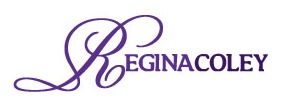Schools can use restorative justice to address the root of discipline issues and to help build community. Restorative justice is an approach to conflict resolution which focuses on healing relationships between those who have been harmed and those who are responsible for the harm. This means that when a student breaks a school rule, for example, instead of merely being punished (possibly without input from the person harmed), there might be a conversation with that person in order to repair any damage done and understand ways to prevent it from happening again. This can be done through one-on-one conversations or in group circles. Restorative justice is not just about punishment; it’s about building stronger relationships and creating a more equitable learning environment for everyone.
What is restorative justice?
Restorative justice is a process that focuses on repairing the harm caused by crime. In restorative justice, victims and offenders take an active role in seeking out solutions to repair the harm, which can include restitution or apologies. The goal of restorative justice is not only to punish perpetrators but also to create a more equitable environment for everyone within the community.
Restorative practices can be used before and after a crime has been committed, including at schools where students may need help with conflict resolution.
How can schools engage in restorative justice?
The approach of restorative justice is a way to strengthen community relationships. It’s also a way to create a more equitable environment. To that end, it can be used in schools.
The purpose of incorporating restorative justice into your educational program is twofold: it teaches students about the importance of community and gives them skills for handling conflict effectively.
What are some restorative practices?
Restorative justice practices are non-punitive and focus on repairing harm. They’re often used in schools, but can be used in a variety of settings. Restorative practices are often used in conjunction with other practices, such as restorative circles or mediation. These practices include:
- Circle processes
- Mediation
- Restorative conferencing
What are some challenges?
As you incorporate restorative justice into your educational program, there are some challenges to consider. First, it’s important to be aware that not every student will be ready and willing to participate in this type of process. Some students may not understand what restorative justice is all about, or they might have had negative experiences with traditional school policies and procedures. Your job as a teacher is to make sure that the students who do want this opportunity have the support they need from you and their parents.
Next, remember that not all students’ needs are going to be met by this process alone—especially if they’re dealing with trauma outside of school (such as abuse at home) or don’t feel comfortable talking about their feelings in front of others. These issues should be addressed by other members of your staff as well as teachers who specialize in working with these kinds of struggles on a regular basis.
Restorative justice is a way to strengthen community relationships and create a more equitable environment.
Restorative justice is a way for people who have been harmed by others to receive support, repair their relationships with the community, and find closure. It’s also a way for communities to heal and build stronger relationships through mutual understanding, forgiveness, and empathy. A restorative approach can be used within schools in many different ways—including classroom discussions on trauma or conflict resolution activities with students—to help create more equitable environments where everyone feels safe and respected.
By incorporating restorative justice into your school, you can create an inclusive and positive environment where students feel safe and valued. Not only will this help lower the number of suspensions and expulsions, but it will also increase attendance and academic performance among students who have traditionally struggled in the classroom.
